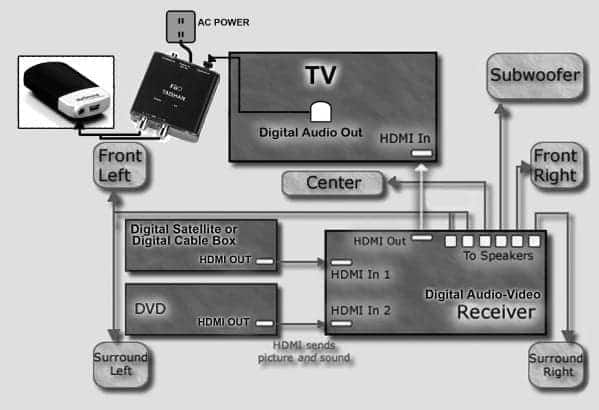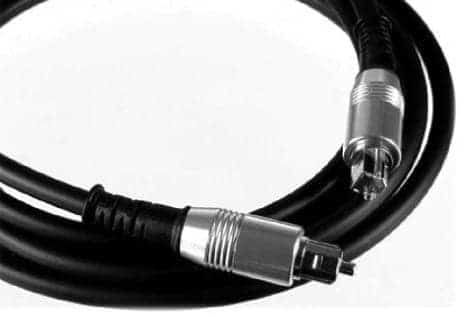BY Ron J. Leavitt, AuD, Nikki Clark, AND Colette Vossler-Welch, BS
A practical work-around to many popular ALD products.
Today, consumer and professional audio and hearing instrument science has gone digital with one important exception. Most assistive listening devices (ALDs) continue to accept only analog inputs. This is becoming increasingly problematic as many of today’s televisions offer only digital audio outputs. As such, analog ALDs cannot interface directly with the television.
Fortunately, there is an inexpensive work-around, as shown in Figure 1. In this diagram, the digital output is converted to an RCA analog output, which can interface with any number of analog devices including but not limited to an Oticon ConnectLine TV adapter, a Phonak TV Link, a ReSound Mini Mic, a Siemens Bluetooth transmitter, a Starkey Surflink (which already has a digital optical input and does not require the analog conversion), a Widex TV Dex, or a Qlink Bluetooth transmitter. This would also include Sennheiser wireless TV systems (sets 830, 840, IS 410, and RS 120) and older TV Ears. This digital to audio conversion allows the person with hearing loss to use the hearing aids as the wireless receiver device with their respective analog transmitters.

For households with surround sound systems, the HDMI output from the digital cable box is then fed to an amplifier, which might be either an AM/FM surround sound system or digital mixer/amplifier. This connection allows other family members with normal hearing to continue to use the surround system with high-fidelity loudspeakers. The wiring diagram for this is also shown in Figure 1. A parts list of the necessary adaptors is given in Figure 2 for the digital to analog conversion. All parts are available online from Amazon and many other audio retailers.
Figure 2: Parts List


Digital Optical Coax to Analog RCA Audio Converter Adapter


It might be argued that down-converting a digital 5.1 surround optical signal from a television to a mono or stereo analog signal is not good audio practice. The authors do not disagree. However, this work-around does allow hearing aid wearers to access today’s more advanced media systems without interfering with the listening enjoyment of others with normal hearing.
It is preordained that, in the future, ALD manufacturers will offer an optical digital interface on all of their products. Several do already. In the meantime, this work-around is offered as an interim solution for those manufacturers’ products that continue to offer analog inputs.
Correspondence can be addressed to HR or [email protected].
Ron J. Leavitt, AuD, is an audiologist who owns Corvallis Hearing Center in Corvallis, Ore, and is the founder of the Oregon Association for Better Hearing (OABH), a nonprofit consumer test group for hearing aid users. He has served as a consultant for the Teen Transition Project of the Hearing Loss Association of America (HLAA), the American Bar Association access program, and the US Forest Service visitor center accessibility program. Nikki Clark and Colette Vossler-Welch, BS, are clinic assistants at Corvallis Hearing Center.





